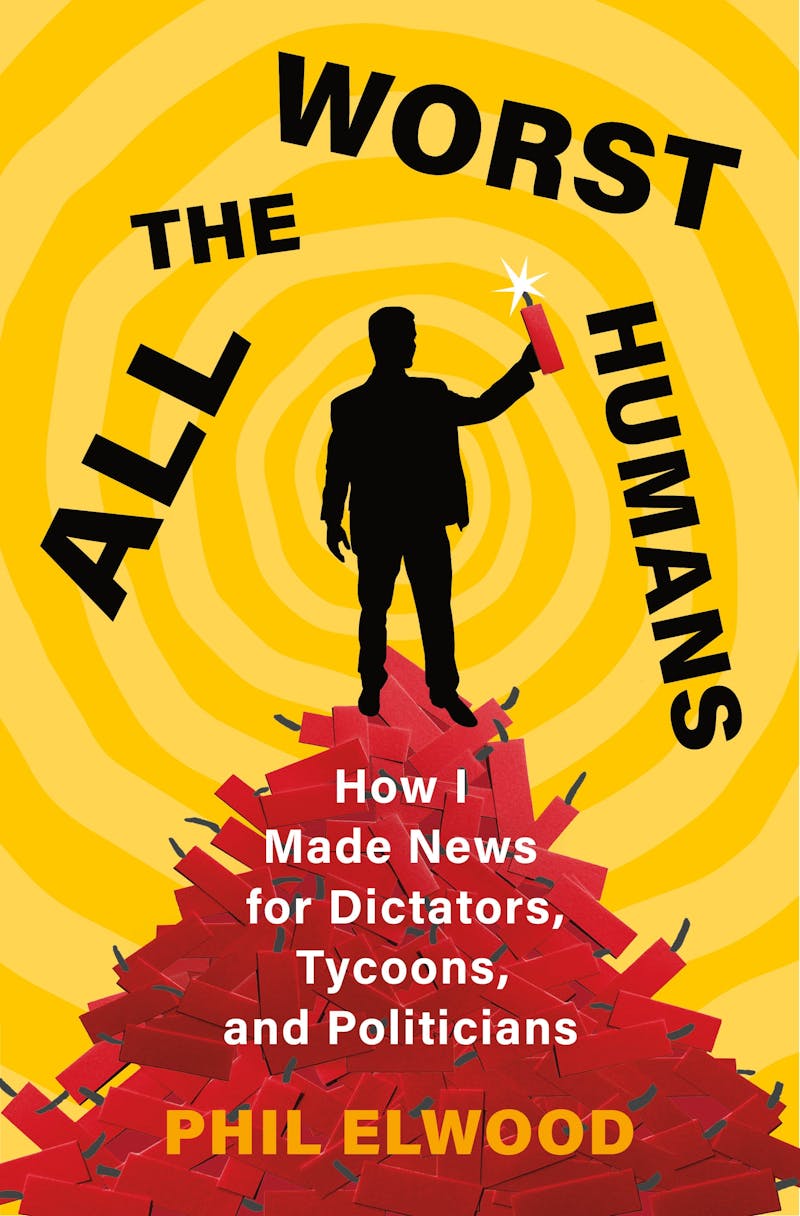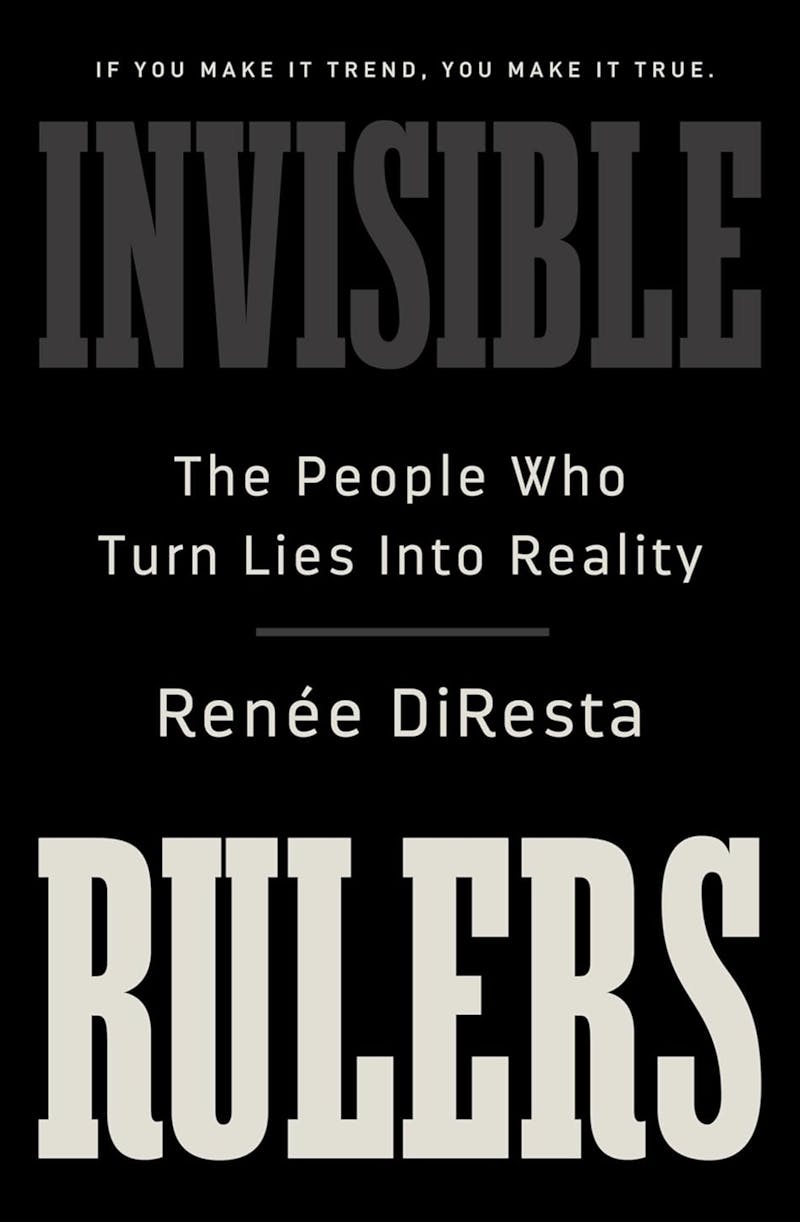In 1972, the P.R. firm Burson-Marsteller created a multimedia presentation called “Bad Day at Black Rock” for Owens Corning Fiberglas. Despite borrowing its title from a beloved 1955 post-Western, the production had little to do with the film’s themes of racial intolerance and greed. Rather it was a crisis simulation exercise set at a make-believe factory, and the “bad day” in question involved an array of public-relations horrors—environmentalists bleating about polluted estuaries, a sex-discrimination lawsuit, community rumors about the dangers of fiberglass particulate, and the accidental death of a plant worker. This cascade of disasters coincided with a meeting of the pretend town planning commission during which the company would be seeking a zoning variance. Participants in the workshop, plant managers from around the country, were tasked with spinning the calamities to a skeptical audience of “commissioners” portrayed by Burson-Marsteller employees.
According to CEO Harold Burson, who tells the story in e pluribus unum (one of his two vanity memoirs), Burson-Marsteller won a Silver Anvil from the Public Relations Society of America for its simulation, and such elaborate P.R. war games became a staple of the company’s work. It went on to rep such clients as Union Carbide (Bhopal), Dow Corning (leaking breast implants), Pan Am (Lockerbie), and Philip Morris (cancer), along with the military junta in Argentina and Romanian dictator Nicolae Ceauşescu. Meanwhile, it ran point for Big Oil, work that got one of its executives killed in 1994 when he opened a mail bomb courtesy of Ted Kaczynski. The incident seems to have left Burson shaken, albeit not for the reason one might think. “If the Unabomber wanted to make a dramatic statement, why not me?” the CEO wondered. “He almost certainly would have made bigger headlines.”

A copy of e pluribus unum has graced the far end of my bookshelf for years. I purchased it, a thrift-store find, after noticing that Harold Burson had personally inscribed the volume (“with esteem and affection”) to longtime rival Bill Ruder of Ruder Finn—a company that went from repping crooner Perry Como (square) to helping Saudi Crown Prince Mohammed bin Salman (bone saw) with his Neom megacity project. Then an unseasoned reporter, I thought it might teach me to spot the relentless spin to which I was sure to be subjected. It also struck me as an important artifact, a Sterling Cooper–esque totem from the days when “influencers” were men who wore wingtips, slurped dirty martinis at the Old Ebbitt Grill, and would sooner open their own mail than post a selfie.
All the Worst Humans, the new memoir by P.R. operative Phil Elwood, may represent the last gasp of that disappearing era. Whereas Burson sought to give his oft-maligned industry a gloss of respectability, Elwood paints it as a teeming worm bin cooking up high-priced fertilizer, and proposes to lift the lid. In an information space shot through with fake news, propaganda, psyops, and false flags, Elwood suggests that P.R. specialists like him, who outnumber journalists by a ratio of six to one, are the true agenda-setters. By cheerfully providing information, angles, and canned quotes to overworked reporters, P.R.s, he suggests, exert an inescapable pull on the discourse, subtly determining what stories get covered and how.

While All the Worst Humans is nominally a confession, it also operates as an advertisement for Elwood’s own importance and that of his trade. He proudly casts himself as a Beltway bottom-feeder—canny designer of influence campaigns on behalf of “dictators, tycoons, and politicians.” And yet the capers that he recounts tend instead to illustrate the waning significance of traditional P.R. in today’s vast and unwieldy online communications marketplace—a digital ecosystem exhaustively delineated by Renée DiResta in her new book, Invisible Rulers. To read Elwood’s account of his boutique services alongside DiResta’s survey of mass distortion is to witness an evolutionary leap in the practice of persuasion—in which conventional political influence campaigns give way to algorithmically driven viral phenomena beyond the control of even the most devious flacks.
In a representative democracy, governance requires a thin veneer of public acquiescence. As a result, “persuasion has become a self-conscious art,” as Walter Lippmann, a founding editor of this magazine, noted more than a century ago, going on to predict that “the knowledge of how to create consent will alter every political calculation and modify every political premise.” Somewhat less evident at the time was the business angle—how corporations would eagerly adopt and refine these same tools, creating a $129 billion industry around the discreet manipulation of public sentiment.
Many credit Edward Bernays, a nephew of Sigmund Freud, with inventing modern public relations. Among other things, he made cigarettes a symbol of female empowerment and helped demonize Guatemala’s democratically elected President Jacobo Árbenz on behalf of the United Fruit Company. Although Bernays sought to conceal his role in these campaigns, he was up-front about his overall approach. As he explained in his 1928 book, Propaganda, “In almost every act of our daily lives, whether in the sphere of politics or business, in our social conduct or our ethical thinking,” our views are shaped by figures “who pull the wires which control the public mind.”
In the years since, the wire-pullers have compiled a slew of noteworthy accomplishments. Among their greatest hits are Hill and Knowlton’s work on behalf of Kuwait in advance of the first Gulf war, when the firm coached an anonymous congressional witness (later revealed to be the daughter of the Kuwaiti ambassador), who described invading Iraqi soldiers pulling premature babies from incubators; the infamous “swiftboating” of Democratic presidential candidate John Kerry, an effort spearheaded by Republican advertising consultant Rick Reed; and the tireless work of APCO Worldwide to kneecap health care reform on behalf of the insurance industry. No doubt their most consequential triumph has been the ongoing delay of government action to slow the excretion of carbon into the world’s atmosphere—a sprawling campaign for which every creature on Earth will soon be invoiced.
The author stumbles into this swamp in the summer of 2000. A once-promising student and debate-team powerhouse, Elwood has developed a cocaine problem, flunked out of college, and retreated to his childhood home when a sympathetic friend offers him a richly undeserved shot at redemption: a possible internship on Capitol Hill. He’s summoned to an interview with an aide to Senator Patrick Moynihan at the Camelot Showbar, an M Street strip club. The nude dancers hovering over their table don’t faze Elwood in the slightest, and the kid’s lack of squeamishness wins him the job. (What more could the statesman who famously lamented “defining deviancy down” ask for in a gofer?)
After a few years on the Hill, including an unremarkable stint as legislative correspondent for Senator Carl Levin, Elwood makes a beeline for the dark side, eventually finding himself employed by none other than Burson-Marsteller. Tasked with persuading pregnant women to eat more tuna (do not do this), he and his colleagues employ one of the classic tricks of the trade—helping industry groups pay off shady academics and nonprofits that will deliver the chosen message. In this case, however, the campaign backfires; the firm’s machinations are exposed by The New York Times. Innumerable infants sidestep a toxic dose of mercury, and the author—who is pointedly vague about his role in this extraordinarily cynical fiasco—marches gamely onward.
Elwood next lands at the boutique P.R. firm Brown Lloyd James, whose famously dapper founder, Peter Brown—a former fixer for the Beatles—describes his business with Mephistophelean politesse. (“We solve ornate problems for extraordinary clients.”) One of Elwood’s more clever campaigns for BLJ aimed to boost Qatar’s 2010 long-shot bid to host the World Cup. The United States was considered a top contender, but Elwood devised a scheme to help thwart the home team bid by raising questions about the government’s financial commitment. The ploy involved yoking the effort to a totally unrelated issue: the battle against childhood obesity, then a popular cause championed by Michelle Obama. First, he drafted a congressional resolution calling on the nation to tackle this problem before spending a dime on a frivolous sporting event. Next, he arranged for a lame-duck U.S. representative to introduce it (presumably, backs were scratched). Finally, he handed off the scoop to a friendly reporter: Ben Smith, then at Politico, who headlined the story “World Cup vs. Gym Class?” Maybe Elwood’s handiwork spooked the International Federation of Association Football, or FIFA, maybe not (bribery has also been alleged), but at the very least it gave opponents of the U.S. bid a handy pretext for voting against it.
More intriguing is the role played by the press in this bit of subterfuge. Several reporters are named in the book, but none receive as many cameos as Smith, who has since copped to being “embarrassed” by the World Cup incident. That he nonetheless provided extravagant advanced praise for the book (“an exhilarating ride through the underbelly of global power structures”) tells us perhaps more than Elwood’s exposé does about how this game is played. The savviest beat reporters are well-accustomed to being used in this way, and flacks reward their malleability with a steady trickle of exclusives, the coin of the realm in a media marketplace more focused on who prints a story first than why it matters. When carefully managed, such relationships endure for years. During his stint as a media columnist at The New York Times, Smith would deliver again, printing an exclusive interview with Elwood client Brandon Brown, literally riding shotgun while the race car driver (presumably at the urging of NASCAR’s marketing team) sought to leave that pesky “Let’s Go Brandon!” meme in the dust.
Brown was one of the more harmless clients on Elwood’s roster, which also included piracy kingpin Kim Dotcom, Nigerian President Goodluck Jonathan, and Libyan dictator Muammar Qaddafi. The book’s centerpiece recounts a trip to Las Vegas during which Elwood is tasked with serving as minder for the dictator’s youngest son and national security adviser, Mutassim. This assignment requires him to procure cocaine, fend off the Bellagio’s housekeeping staff, arrange travel for his client’s girlfriend, and stand around while he plays roulette. It’s a perfectly unremarkable Vegas trip, in other words. The escapade concludes with Elwood smuggling $60,000 in U.S. currency (reimbursement for various expenses) through airport security by taping it to his torso. He plays the scene for maximum suspense—never mind that, on a domestic flight, it’s legal to carry cash in any amount.
Eventually, Elwood finds himself embroiled in an actual scandal when the ties between one client, the Israeli intelligence firm Psy-Group, and the 2016 Trump campaign catch the eye of special counsel Robert Mueller. Elwood’s work for the spook shop mostly involves helping it launder funds through his consultancy and printing out and hand-delivering presumably incriminating documents “written in Hebrew. Or Arabic,” he reports. “The less I know, the better.” (Better for him, perhaps, if not his reader.) Approached by the FBI, the author promptly betrays his client. He then sells out the Feds, too, by leaking details of the investigation to friendly reporters at The Wall Street Journal and Bloomberg in exchange for keeping his name out of their stories.
Psy-Group wasn’t above classic covert ops—secret tape recordings, “honeypots,” and the like—but the firm did most of its work online. It ginned up networks of illegitimate news websites to publish and amplify its favored narratives, and it made an art form out of creating fake social media accounts, so-called sock puppets, designed to manipulate the public conversation. One of its more successful digital operations began in 2016, when it undermined the boycott, divestment, sanctions movement by digging up and promoting dirt on pro-Palestinian student activists.
Elwood doesn’t seem to realize it, but what this sordid episode illustrates as much as anything is that the brand of artisanal P.R. he practices—perception brokers cooking up inventive angles; fast-talking operators with bulging Rolodexes—has largely been supplanted, or as they put it in Silicon Valley, disrupted. The internet turned every schmuck with a web connection (“somebody sitting on their bed that weighs 400 pounds,” as Donald Trump famously theorized) into a would-be ace propagandist. Meanwhile, the media industry that flacks like Elwood have spent decades spinning is itself in free fall. You won’t get far shopping an angle when your phone call rings in an empty newsroom.
Despite Elwood’s close work with Psy-Group, and Kim Dotcom for that matter, his book scarcely mentions the internet. For that, one might turn to DiResta’s Invisible Rulers, a new survey of the digital information landscape—a bleak battle zone where state intelligence agencies, lulz-junkies, political combatants, grifters, and increasingly everyone else engage in daily info wars. The book, which borrows its title from an Edward Bernays coinage, tells the story of the emergence of social media as the ultimate tool of persuasion, tracing the evolution of online propaganda; its impact on public life; and the hesitant, often hapless efforts of corporate trust-and-safety teams to address it.
In 2014, DiResta, a marketing staffer for a San Francisco tech startup and a young mother, began turning to local “mommy boards” for parenting advice. What she found instead were threads full of misinformation and conspiracy theories about the supposed dangers of childhood immunization. Entering the fray first as a parent and eventually as the co-founder of an advocacy group, Vaccinate California, she saw up close how online platforms are gamed and exploited for nefarious purposes. It was, she writes, “one of the opening skirmishes in a war for power, influence, and reality itself.”
Before long, she shifted her attention to this more virulent type of infection, beginning a close study of how algorithms can be manipulated, ads microtargeted, and bots weaponized to manipulate users’ emotions, send them scurrying down rabbit holes, and seal them into “bespoke realities,” as she puts it. In 2019, DiResta took a job as research manager for the Stanford Internet Observatory, a digital “laboratory” devoted to the study of online abuse and misinformation. As foreign governments and political extremists (most of them on the far right) began pushing an array of false narratives, platforms adopted a welter of policies to mitigate their impact, including throttling the reach of certain posts and ultimately deplatforming bad actors, including the U.S. president. Disinformation experts fought back and became high-profile targets. DiResta herself was brigaded, harassed, and threatened. (Her college internship with the CIA made especially good fodder for conspiracy theorists.) Eventually, her communications and those of her colleagues were subpoenaed by the Select Subcommittee on the Weaponization of the Federal Government. “Matt Taibbi said something in a Twitter thread, and Jim Jordan got to read my emails,” she writes.
As DiResta leads us through the familiar litany of digital grotesqueries—Gamergate, Pizzagate, Russiagate, QAnon, stonks, Covid denial, and of course the Big Lie—Elwood’s spoon-fed scoops and ghostwritten op-eds begin to seem as quaint and inconsequential as those tawdry blind items with which gossip columnists once terrorized Broadway. Some digital disinformation operations are directed by foreign intelligence services, like the Kremlin-linked Internet Research Agency, which deployed an army of online trolls to exploit political divisions in the run-up to the 2016 election. Others, like the portrayal of coronavirus mitigation efforts as a conspiracy of Big Pharma and the globalist cabal, seem to have arisen organically before being weaponized and/or monetized by an array of hacky partisans and influencers. In either case, however, it seems evident that the traditional top-down propaganda campaign has given way to something more powerful, insidious, and unruly—and immeasurably more difficult to counter. It probably doesn’t help that DiResta’s laboratory at Stanford was recently shuttered, in part due to a right-wing pressure campaign.
And it will only get worse with the emergence of artificial intelligence, already a groundbreaking advance in the science of prevarication. “Generative AI enables us to manufacture unreality,” DiResta writes, “to produce images from worlds that don’t exist, audio that speakers never said, and videos of events that didn’t happen.” More important, it allows us to do it at scale, and at negligible cost. In fact, if existing AI models have any proven utility, it’s precisely this—they are virtuosos at creating what The Verge called “fluent bullshit.”
DiResta recounts a May 2023 incident in which an AI-generated image of billowing smoke was posted by a verified Twitter handle resembling a Bloomberg News account. “Large Explosion near the Pentagon Complex in Washington D.C. - Initial Report,” the tweet read. Boosted by Russia Today, the news promptly knocked 85 points off the Dow. The report was debunked within hours—the building in the picture looked nothing like the Pentagon—and the market recovered.
No harm was done, or so it seemed. But as such incidents become routine, they will inevitably lead to a more pernicious problem. Facing down a fire hose of information and exhausted and disoriented by the never-ending task of separating fact from fiction, many of us will tune out altogether—refusing, quite reasonably, to believe anything at all.
In early May, the multinational communications behemoth WPP—as it happens, now the parent company of Harold Burson’s old agency—was targeted by hackers. The culprits impersonated CEO Mark Read by creating a WhatsApp account using his image, then invited other company staffers to a Microsoft Teams meeting in which they employed a generative AI voice clone to impersonate a top executive. Read later emailed senior leaders warning the team that “just because the account has my photo doesn’t mean it’s me.” As deepfakes proliferate, it seems even the world’s top influence peddlers may no longer have a sure grasp on reality.
Shortly thereafter, the company acknowledged that earnings were down slightly for the first quarter. But not to worry, Read reassured investors. Making special note of the company’s own “new AI capabilities,” he promised, “We remain on track to return to growth.”




